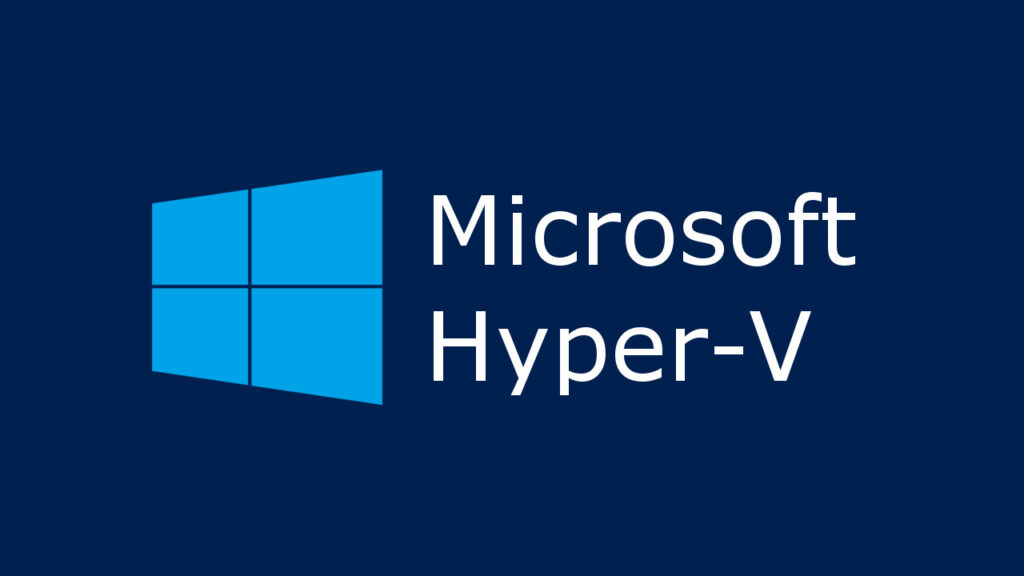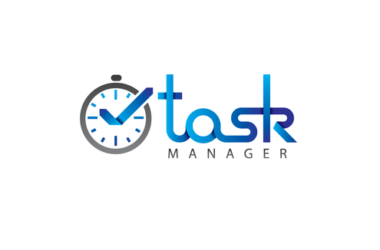When it comes to server virtualization, VMware ESXi has been a stalwart in the industry. Its robust features, seamless virtual machine management, and performance optimization have made it a go-to choice for many enterprises. However, no system is without its limitations, and as businesses evolve, the need to explore ESXi alternatives becomes crucial. In this article, we delve into the features, limitations, and what sets ESXi apart, ultimately guiding you through a curated list of commonly used ESXi alternatives.
Exploring ESXi: Features, Limitations, and What Sets it Apart

ESXi Features: A Brief Overview
- Efficient Resource Utilization: ESXi boasts efficient resource utilization, optimizing server performance and ensuring smooth virtual machine operations. The hypervisor’s ability to allocate resources dynamically contributes to its high-performance reputation.
- Centralized Management: One of ESXi’s standout features is its centralized management interface. The user-friendly platform allows for easy deployment, monitoring, and maintenance of virtual machines, streamlining administrative tasks.
- Security Measures: ESXi prioritizes security, incorporating features like isolation, secure boot, and virtual machine encryption. These measures contribute to a secure virtual environment, which is essential for safeguarding sensitive data.
ESXi Limitations: What to Keep in Mind
- Hardware Compatibility: ESXi’s stringent hardware compatibility requirements can be limiting. Not all servers are compatible, potentially leading to hardware upgrade costs for businesses with existing infrastructure.
- Licensing Costs: While ESXi offers a free version, advanced features often come with licensing costs. For enterprises seeking a comprehensive virtualization solution, these costs can escalate, impacting the overall budget.
- Limited Guest OS Support: ESXi may have limitations in terms of guest operating system support. Compatibility issues can arise with certain OS versions, restricting flexibility for users with diverse operating environments.
What Prompts the Search for ESXi Alternatives?

In the ever-evolving landscape of IT infrastructure, businesses embark on the quest for alternatives to ESXi driven by multifaceted considerations. This exploration is fueled by a nuanced understanding of the virtualization ecosystem and the specific requirements that businesses encounter. Let’s delve deeper into the key driving factors that prompt the search for ESXi alternatives.
1. Cost-Effectiveness in a Changing Landscape
The dynamic nature of the business environment necessitates a strategic approach to cost management. As organizations adapt to market fluctuations and evolving economic conditions, the financial aspect of virtualization solutions becomes a pivotal consideration. Seeking ESXi alternatives is motivated by a quest for cost-effective options that not only fit within budget constraints but also provide optimal performance and robust security. This pursuit ensures that businesses maintain fiscal prudence without compromising the integrity of their virtualized infrastructure.
2. Enhanced Compatibility for Diverse Infrastructures
ESXi’s robustness may be accompanied by stringent hardware compatibility requirements. In organizations with diverse infrastructure setups, the challenge lies in finding a hypervisor that seamlessly integrates with a variety of hardware configurations. The search for ESXi alternatives becomes imperative as businesses aim to overcome compatibility hurdles and ensure a smooth transition to virtualized environments. This quest for enhanced compatibility reflects the need for flexibility in choosing virtualization solutions that harmonize with the existing infrastructure, fostering efficiency and minimizing operational disruptions.
3. Flexibility in Managing Varied Environments
The modern business landscape often features a tapestry of operating systems, applications, and technologies. Operating in such heterogeneous environments demands flexibility in virtualization management. ESXi alternatives are explored to find solutions that offer versatility in orchestrating diverse virtualized environments. Businesses seek hypervisors that can seamlessly accommodate different operating systems, applications, and workloads, empowering them to adapt to changing requirements with ease. The pursuit of flexibility underscores the dynamic nature of contemporary IT ecosystems and the need for virtualization solutions that can evolve in tandem.
4. Specialized Features Tailored to Business Requirements
In the pursuit of technological excellence, businesses often require specialized features to meet unique operational challenges. ESXi, while formidable, may not always cater to highly specialized needs. The exploration of ESXi alternatives is driven by the quest for hypervisors that offer specific functionalities tailored to distinct business requirements and use cases. Organizations seek solutions that go beyond the standard offerings, providing them with a competitive edge and addressing niche demands. This strategic pursuit of specialized features aligns virtualization solutions more closely with the intricacies of business processes, fostering innovation and efficiency.
Commonly Used ESXi Alternatives For Server Virtualization

Navigating the dynamic landscape of server virtualization unveils a plethora of alternatives to VMware ESXi, each with its distinctive strengths and capabilities. As organizations seek to optimize their virtualized environments, the exploration of these alternatives becomes an essential journey. In this detailed exploration, we uncover the unique features and functionalities that set these ESXi alternatives apart, providing a comprehensive overview for businesses looking to diversify their virtualization strategies.
1. Microsoft Hyper-V: Bridging the Windows Divide
Microsoft Hyper-V emerges as a formidable ESXi alternative deeply ingrained in the Windows ecosystem. Beyond its seamless integration with Windows environments, Hyper-V positions itself as a robust virtualization platform catering to organizations invested in the Microsoft infrastructure. Its arsenal includes dynamic memory allocation and enhanced security features, making it a compelling choice for businesses seeking a virtualization solution aligned with the Windows ecosystem.
2. KVM (Kernel-based Virtual Machine): Power and Flexibility in Linux
KVM, a Linux-based hypervisor, distinguishes itself with unparalleled power and flexibility. Its unique integration into the Linux kernel ensures efficient resource management, making it the preferred choice for enthusiasts of open-source solutions. Renowned for its support across various guest operating systems and its ability to leverage hardware virtualization extensions, KVM stands as a versatile option for organizations rooted in Linux-centric virtualization environments.
3. Xen Project: The Open-Source Powerhouse
In the realm of open-source hypervisors, the Xen Project stands tall, celebrated for its outstanding performance and scalability. With a keen focus on security, this powerhouse caters to both enterprise and cloud computing environments. The architectural brilliance of Xen Project, featuring a hypervisor that runs directly on the hardware, enhances efficiency and isolation, making it an attractive ESXi alternative for organizations seeking open-source prowess with a proven track record.
4. Proxmox Virtual Environment (Proxmox VE): Bridging VMs and Containers
Proxmox VE represents a comprehensive solution by seamlessly integrating KVM for virtual machines and LXC for container-based virtualization. This unique amalgamation empowers businesses to manage both virtual machines and containers within a unified platform. Beyond its technical prowess, Proxmox VE stands out with a user-friendly interface, catering to organizations with diverse virtualization needs and a preference for unified management of different virtualization technologies.
5. VirtualBox: Oracle’s User-Friendly Option
Developed by Oracle, VirtualBox distinguishes itself as a user-friendly virtualization platform supporting a wide range of guest operating systems. Its versatility and ease of use make it an excellent choice for individual users, developers, and small businesses. VirtualBox’s ability to seamlessly run on various host operating systems, coupled with features like snapshot management and smooth integration with the host system, positions it as a versatile and accessible ESXi alternative in the virtualization landscape.
6. Citrix Hypervisor: Enterprise-Grade Virtualization
Formerly known as XenServer, Citrix Hypervisor is tailored for enterprise-grade performance. It offers advanced features such as live VM migration, resource pooling, and high availability, making it a stalwart for demanding business environments. Citrix Hypervisor’s focus on scalability and centralized management aligns with the needs of large enterprises seeking a robust virtualization platform with a proven track record.
7. oVirt: Managing Virtualized Data Centers Effectively
oVirt, an open-source platform, is crafted specifically for the effective management of virtualized data centers. With support for KVM as the underlying hypervisor, oVirt provides a comprehensive solution for organizations seeking efficient virtualization management. Features such as live migration, storage management, and a user-friendly web-based interface position oVirt as a viable ESXi alternative for businesses focused on optimizing data center resources.
8. Virtuozzo: Balancing Containers and Virtualization
Virtuozzo strikes a unique balance between container-based and full virtualization, making it a preferred choice for virtual private server (VPS) hosting. Excelling inefficient resource utilization, Virtuozzo allows organizations to optimize server resources while maintaining the isolation provided by virtualization. Its emphasis on performance and scalability positions Virtuozzo as a compelling ESXi alternative for businesses seeking a harmonious integration of containers and traditional virtualization.
9. OpenNebula: The Cloud Computing Enabler
OpenNebula stands as an open-source cloud computing platform supporting various hypervisors, including KVM and VMware. Its primary focus on managing virtualized data centers makes it an invaluable asset for cloud enthusiasts. OpenNebula’s ability to orchestrate and automate cloud infrastructure, coupled with its flexibility in supporting multiple hypervisors, positions it as a robust alternative for organizations venturing into cloud computing.
10. Vagrant: Streamlining Development Environments
While not a direct contender for production virtualization, Vagrant excels in streamlining virtualized development environments. With support for various providers, including VirtualBox, VMware, and Hyper-V, Vagrant simplifies the process of creating and managing reproducible development environments. Its emphasis on automation and ease of use makes Vagrant an indispensable tool for developers looking to enhance collaboration and efficiency in the software development lifecycle.
Factors To Consider While Choosing The Perfect ESXi Alternative

As organizations embark on the journey of selecting the ideal ESXi alternative, a nuanced evaluation of various factors becomes imperative. The landscape of virtualization solutions is vast and diverse, each offering unique attributes that can significantly impact an organization’s IT infrastructure. To make an informed decision, businesses must consider a multitude of factors that extend beyond the mere technical specifications of the hypervisor. Let’s delve into an extensive exploration of the critical considerations that pave the way for selecting the perfect ESXi alternative.
1. Compatibility with Existing Infrastructure
Ensuring seamless compatibility with the current hardware and software infrastructure is paramount. An alternative hypervisor should integrate effortlessly with the organization’s existing technology stack, minimizing potential disruptions and ensuring a smooth transition. Compatibility issues can lead to operational inefficiencies and increased downtime, underscoring the importance of selecting a solution that harmonizes with the current IT ecosystem.
2. Cost Considerations
While cost is a fundamental consideration, a comprehensive evaluation involves more than just the upfront expenses. Organizations need to assess the total cost of ownership, encompassing licensing fees, potential hardware upgrades, and ongoing operational costs. Striking a balance between affordability and the hypervisor’s capabilities ensures that the chosen alternative aligns with budgetary constraints while delivering long-term value.
3. Scalability and Performance
The ability of the alternative hypervisor to scale alongside the organization’s growth is a critical factor. Scalability ensures that the virtualization solution can accommodate an expanding workload and an increasing number of virtual machines. Simultaneously, performance considerations, such as resource optimization and low-latency operations, are vital to maintaining an efficient and responsive virtualized environment.
4. Security Features
In an era of heightened cybersecurity concerns, prioritizing security features within the chosen hypervisor is non-negotiable. Encryption, access controls, secure boot options, and regular security updates contribute to a robust virtualization security framework. Evaluating the security posture of each alternative ensures that sensitive data remains protected, meets compliance standards, and is safeguarded against potential threats.
5. Community and Support
The strength of the community surrounding the alternative hypervisor and the availability of vendor support are crucial elements in the decision-making process. A vibrant community ensures access to a wealth of knowledge, forums for issue resolution, and community-driven enhancements. Simultaneously, reliable vendor support becomes indispensable for timely issue resolution, updates, and ongoing guidance. A robust support system is essential for maintaining the health and stability of the virtualized environment.
Conclusion
In the dynamic landscape of server virtualization, exploring ESXi alternatives becomes a strategic move for businesses aiming to meet evolving needs. Each alternative comes with its own set of features, addressing specific requirements and preferences. By carefully considering factors such as compatibility, cost, scalability, and security, businesses can make informed decisions in choosing the perfect ESXi alternative for their virtualization journey.









